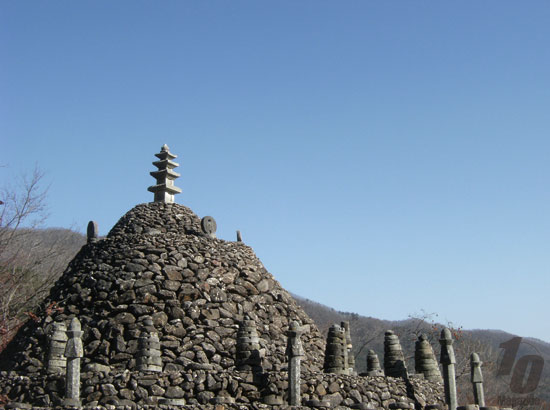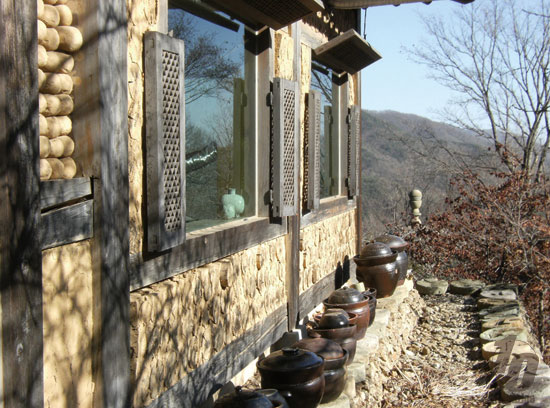If the only Korean palaces you know are in Seoul, it’s time to take a trip to Jiri Mountain.
Words by Todd Bruns and shots by David Carruth

Istood in front of the inner gate to Samseong Palace (삼성궁). It hadn’t been an easy journey. I’d taken a bus from Jinju to the dusty one-horse town of Hadong. After a layover there, I’d continued on another bus to Cheonghak-dong. From there, I’d trudged along the twisting mountain road in Jiri Mountain National Park to the outer gate of the palace, a half-hour uphill walk with minimal signage.
Samseong Palace defines unique in Korea. Rather than a major religion or the medieval royal family, this palace is dedicated to Korea’s original creation myth. The Three Sages that are wor-shipped here are Hwan-in, Hwan-ung, and most of all Dangun, the legendary offspring of a god and a bear-woman whom Korean lore deems the national patriarch.
The palace is located near Cheonghak-dong, a village that was isolated in this mountain valley for 400 years and remains dedicated to the old ways and old apparel. Of course, Korea has no shortage of folk villages built for the benefit of tourists, but Cheonghak-dong and Samseong-gung are more than mere tourist attractions. They were built and are still maintained for the benefit of this isolated group.
The outer portion of Samseong Palace is unlike any place I’d seen in Korea: towering mountains, dancing waterfalls, and stone stupas, which look more Cambodian or Burmese than Korean. Though they aren’t particularly old, they look old in a way that most things here do not. The stupas, walls, and portals are built of granite stones, seemingly piled together by giants.
After making my way through the outer palace, I found another uphill mountain path. At the top of the path stood the door into the inner palace. Outside the closed door was a gong. Somebody had to hit the gong.
A Korean tourist had a few paces on me. She grabbed the mallet and banged the gong three times. Fitting, at the palace of the Three Sages. A man in ancient Korean garb emerged from the door. He led the group that had gathered through the door, which proved to be a dim corridor through the hill.
We re-emerged in daylight on the other side of the hill. The man led us to a ridge overlooking the main palace grounds and a small pond. The gentle slopes of Jiri Mountain enveloped the palace from all other sides. I saw nothing modern-looking on the palace grounds. There are no signs in English anywhere, and even the bathroom fits the theme. From every angle, it looks and feels hundreds of years old and a million miles away from urban Korea’s endless apartment blocks.


==
Getting There
If you’re not going to drive, a bus is your best option. There are direct buses to Hadong from Nambu Terminal in Seoul, but a better choice would be to take one of the frequent buses from Express Bus Terminal or Nambu Terminal to charming Jinju (4 hours), which is also easily accessible from any major city in Korea. Jinju has the most hotels, restaurants, and cultural attractions in the region. From Jinju, buses leave for Hadong hourly (1 hour), and Hadong offers bus service to Cheonghak-dong (1 hour) at 8:30,
11 am, 1, 3:30, and 5 pm. From Cheonghak-dong, Samseong-gung is a half-hour walk with no taxis in sight.
bdsj.or.kr 055-884-1279, 1256 Mukgye-ri, Cheongam-myeon, Hadong-gun, Gyeongnam-do

